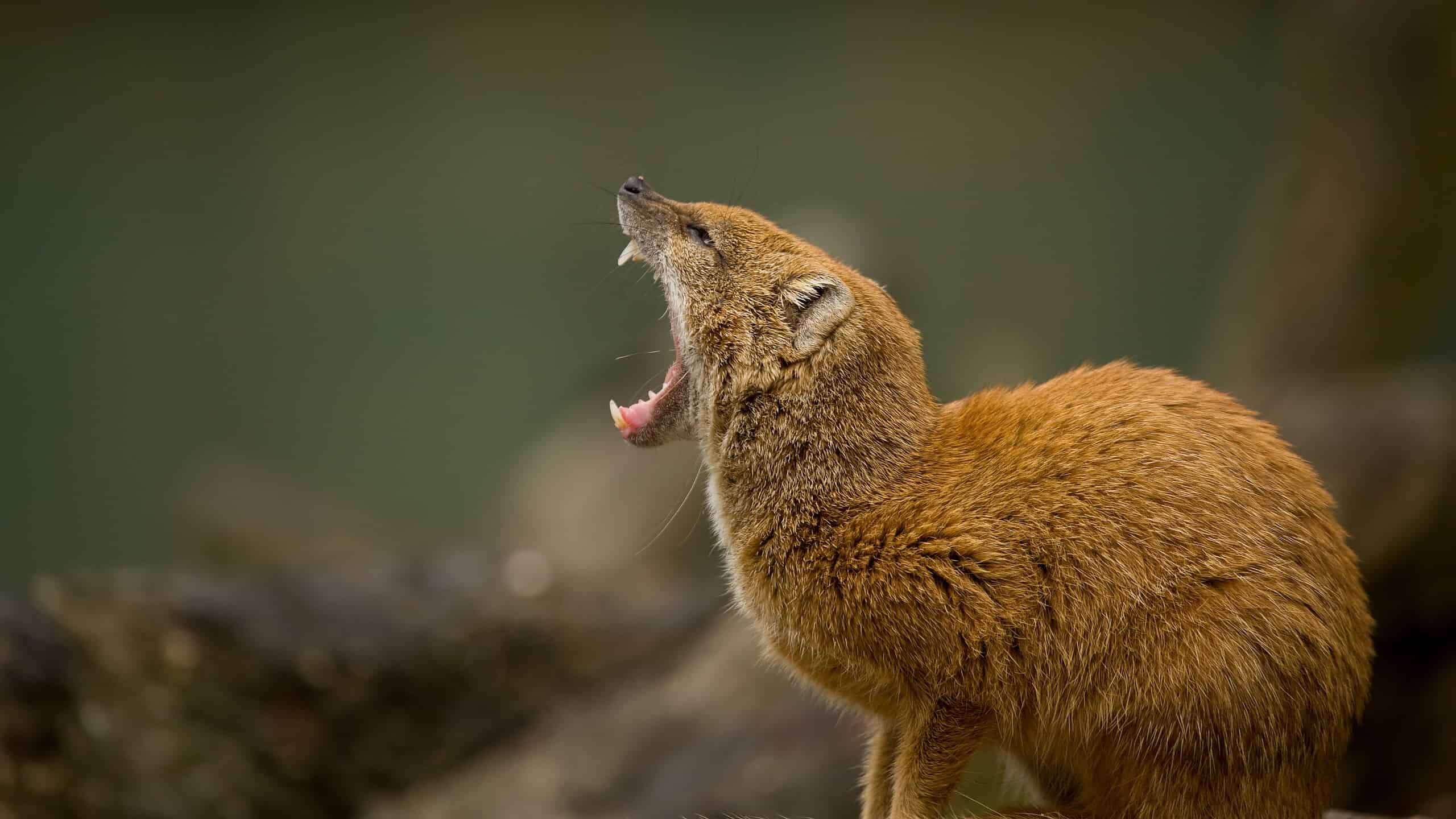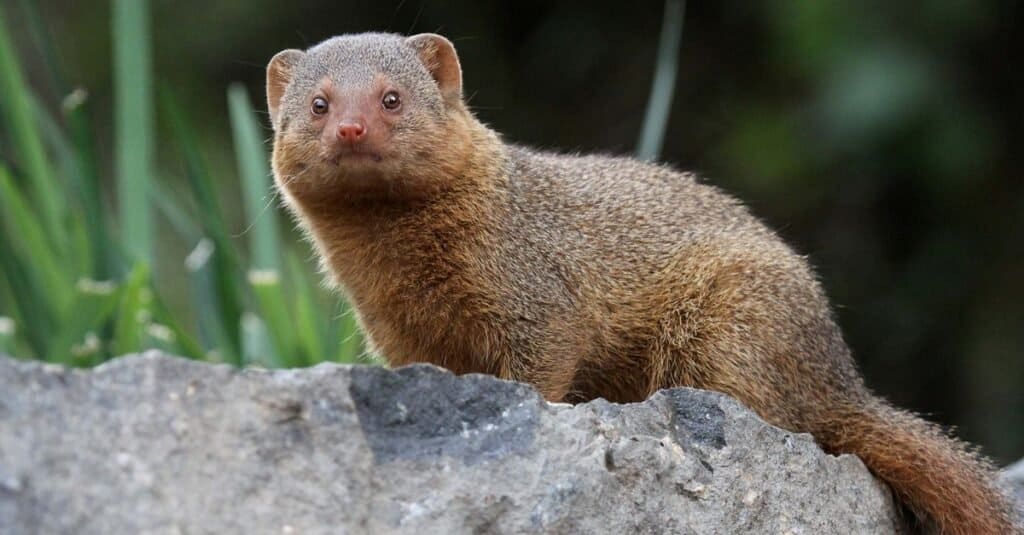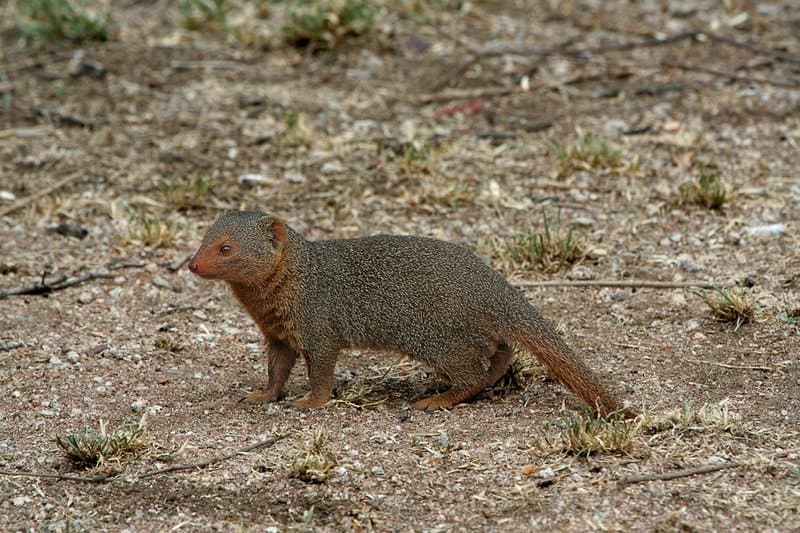Continue reading for our analysis...

This duck enclosure has a lot of visitors — and they are all interested in the eggs! Firstly, some humans have arrived to collect the eggs, but so has a cobra. To add to the excitement, there is a mongoose who wants to hunt the cobra. This is like a distinct ecosystem of its own and results in an epic showdown! View the footage to find out who were the winners and losers in the “battle of the duck enclosure.”
What Do Mongooses Normally Eat?

Mongooses are noted for their audacious attacks on highly venomous snakes, such as king cobras.
©steve bushman/Shutterstock.com
There is no single species of mongoose, but they are a group of animals belonging to the Herpestidae family with similar characteristics. They are in the same order as cats and dogs but are more closely related to viverrids such as civets and linsangs. Mongooses look a little like a weasel and are known for being very bold.
When it comes to food, mongooses will eat just about anything that they can get hold of. That includes eggs. So, the cobra was both a competitor and prey for this mongoose — no wonder it was attacked!
The rest of their diet is made up of reptiles, amphibians, worms, and even small birds and mammals. Some species of mongoose also eat roots, seeds, and fruits. They are not above stealing prey from other animals, and, as we see here, they are willing to tackle venomous snakes!
Why Don’t Mongooses Fear Snakes?

Mongoose do not show fear of snakes because they actively eat them!
©Taken by Schuyler Shepherd (Unununium272)Canon 350D, 100-400mm f/4.5-5.6 L IS., CC BY-SA 2.5, via Wikimedia Commons – Original / License
It’s clear that the humans in this clip are pretty freaked out by the presence of a snake in their duck pen, but the mongoose is not bothered. That’s because they actively hunt and eat venomous snakes. Because they are so agile, they can leap around and make it very difficult for the snake to strike. Also, they have very thick fur, so it is difficult for the snake’s fangs to penetrate the skin.
As a final line of defense, mongooses have a certain amount of immunity to snake venom. They are not completely immune, and multiple bites could cause them some problems. However, they do lack many of the receptors that are necessary for the venom to exert its toxic effect. You can see how confident this mongoose is when dealing with the snake — much more confident than the humans! At the end of the clip, it gets rewarded with a meal of cobra! Who knows, it may decide to have duck eggs as dessert!
How Big Is a Moongoose?

Even though they are small, mongooses are mighty!
©Traci Law/Shutterstock.com
Mongooses typically weigh between 2 and 11 pounds. They measure between 7.9 and 27.6 inches in length, with the tail adding an additional 7.9 to 17.7 inches.
At birth, mongooses are very small, measuring just 3.9 inches in length. However, they grow quickly, reaching adult size within a few weeks of birth.
There is typically a size difference between males and females. Male mongooses are generally larger than females, with males weighing up to 15.4 pounds and measuring up to 35.4 inches. Females, on the other hand, usually weigh up to 11 pounds and measure up to 27.6 inches.
Overall, mongooses are relatively small animals, but they are also highly intelligent and adaptable. They are a fascinating species to study and observe in the wild.
Discover the "Monster" Snake 5X Bigger than an Anaconda
Every day A-Z Animals sends out some of the most incredible facts in the world from our free newsletter. Want to discover the 10 most beautiful snakes in the world, a "snake island" where you're never more than 3 feet from danger, or a "monster" snake 5X larger than an anaconda? Then sign up right now and you'll start receiving our daily newsletter absolutely free.
Thank you for reading! Have some feedback for us? Contact the AZ Animals editorial team.







